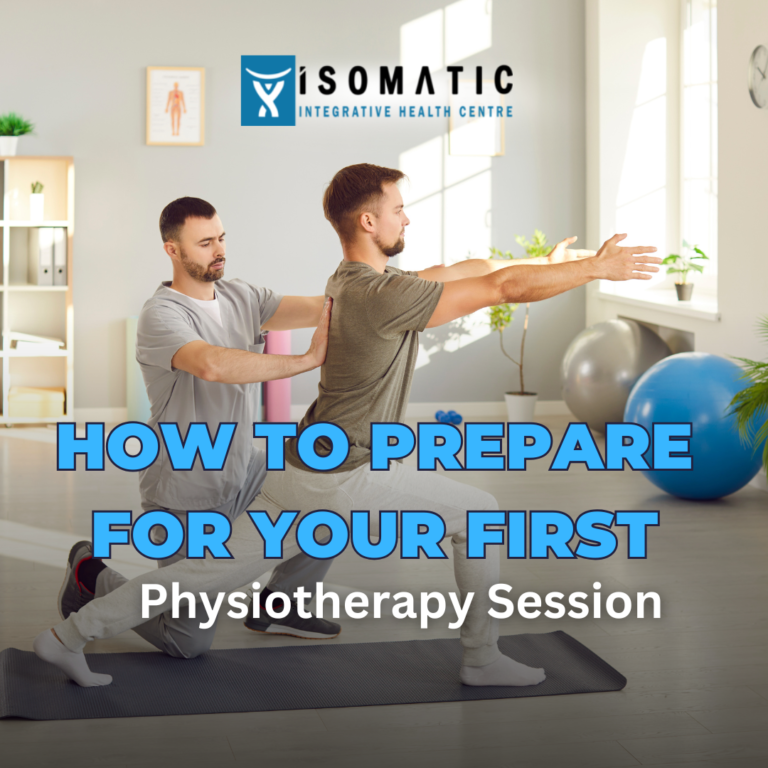
Chronic Back Pain: Why Massage Alone Isn’t Enough
Chronic Back Pain: Why Massage Alone Isn’t Enough Back pain is one of the most common modern ailments—affecting nearly everyone at some point in life.

Starting physiotherapy for the first time can be both exciting and nerve-wracking. Whether you’re recovering from an injury or managing chronic pain, your first session is the foundation of a potentially life-changing journey. Proper preparation not only calms your nerves but also sets the stage for effective healing and long-term success.
This article dives deep into the best practices, expert insights, and practical tips to help you prepare for your first physiotherapy session with confidence, clarity, and comfort. From what to wear to what questions to ask, you’ll walk in ready and walk out empowered.
Physiotherapy, often called physical therapy, is a science-backed treatment designed to restore function, movement, and strength in the body. It’s not just about healing from injury; it’s about empowering individuals to regain independence and quality of life. From sports injuries and post-surgery rehabilitation to chronic pain management, physiotherapy covers a broad spectrum of care.
Think of physiotherapy as a bridge between limitation and liberation. Whether you’re an athlete trying to get back in the game or someone looking to live pain-free again, physiotherapy offers tools, guidance, and personalized strategies to meet your goals. The benefits are multi-fold:
Reduced pain without relying solely on medication
Improved strength and mobility
Prevention of future injuries
Enhanced mental well-being through empowerment
If your body is whispering (or screaming) for help, it’s probably time to listen. Persistent aches, loss of motion, post-operative recovery, and even unexplained discomfort can all signal a need for therapy. A referral isn’t always necessary—many people book a session on their own after realizing they’re not healing well solo.
Here’s your first step toward relief. When calling to book your first physiotherapy session, be prepared to share a brief summary of your concern. The receptionist might ask about your condition, your availability, and your insurance provider. Some clinics also have intake forms you can fill out online before you arrive, saving time and stress.
Don’t just Google and go. Research the therapist’s credentials, look for specialties that match your condition (like sports, neurological, or orthopedic physiotherapy), and read reviews. Trust and communication are key—your therapist should make you feel heard and motivated.
This first meeting is a blend of conversation and movement. You’ll talk through your medical history, goals, and concerns. Then, you’ll go through a series of physical assessments. These might include walking, bending, lifting, or gentle resistance exercises. The goal? To understand your current state and create a custom treatment plan.
Yes, mindset matters. Many people walk in nervous, unsure what to expect. It helps to:
Visualize a positive experience
Avoid doom-scrolling symptoms beforehand
Talk to someone who has been to therapy before
Remind yourself that this is a step towards healing, not something to fear
Loose, comfortable, stretchable clothing is best. Avoid jeans or stiff fabrics. Think gym wear: shorts or leggings and a breathable t-shirt. Depending on your injury, your therapist might ask you to remove or roll up certain items, so wear layers if you’re unsure.
Checklist time:
Doctor’s referral (if required)
Insurance information
A list of medications
Any imaging or reports (like MRIs or X-rays)
Water bottle
Notebook or your phone for notes
Transparency is your superpower here. Be honest, even if the details feel small or unrelated. Allergies, past surgeries, current medications, and mental health all influence how your body heals and how your therapist tailors the treatment.
Setting Realistic Goals with Your Therapist
Your therapist isn’t a magician, but they are your teammate. Set clear, realistic goals together—whether it’s walking without pain, returning to work, or running a 10K. Goals give direction and keep you motivated when the going gets tough.
How long does a first physiotherapy session usually take?
Typically, it ranges between 45 to 60 minutes depending on your condition and assessments.
Will I feel pain during or after the session?
You might feel some discomfort, especially if muscles are tight or weak. Mild soreness the next day is common.
What should I not do before a session?
Avoid heavy meals and strenuous activity. Also, skip taking painkillers that could mask your symptoms.
Do I need a doctor’s referral?
Not always. Many clinics accept self-referrals, but check with your insurance provider first.
Can I bring someone with me?
Absolutely! Especially if you’re anxious or might need help understanding or remembering instructions.
How soon will I see results?
Some people feel better after the first session. For others, it may take a few weeks. Consistency is key.
Your first physiotherapy session is more than just an appointment—it’s the beginning of a transformation. With the right preparation, mindset, and support, you’re not just addressing pain; you’re reclaiming your mobility, strength, and confidence. So take a deep breath, gear up, and step into your healing journey with optimism and readiness.

Chronic Back Pain: Why Massage Alone Isn’t Enough Back pain is one of the most common modern ailments—affecting nearly everyone at some point in life.

How to Speed Up Recovery From a Rotator Cuff Injury Rotator cuff injuries are frustrating. They can limit your ability to lift, reach, or even

Can Osteopathy Improve Your Sleep? The Surprising Answer Tossing and turning at night can feel like a never-ending battle. If you’ve tried everything—herbal teas, meditation